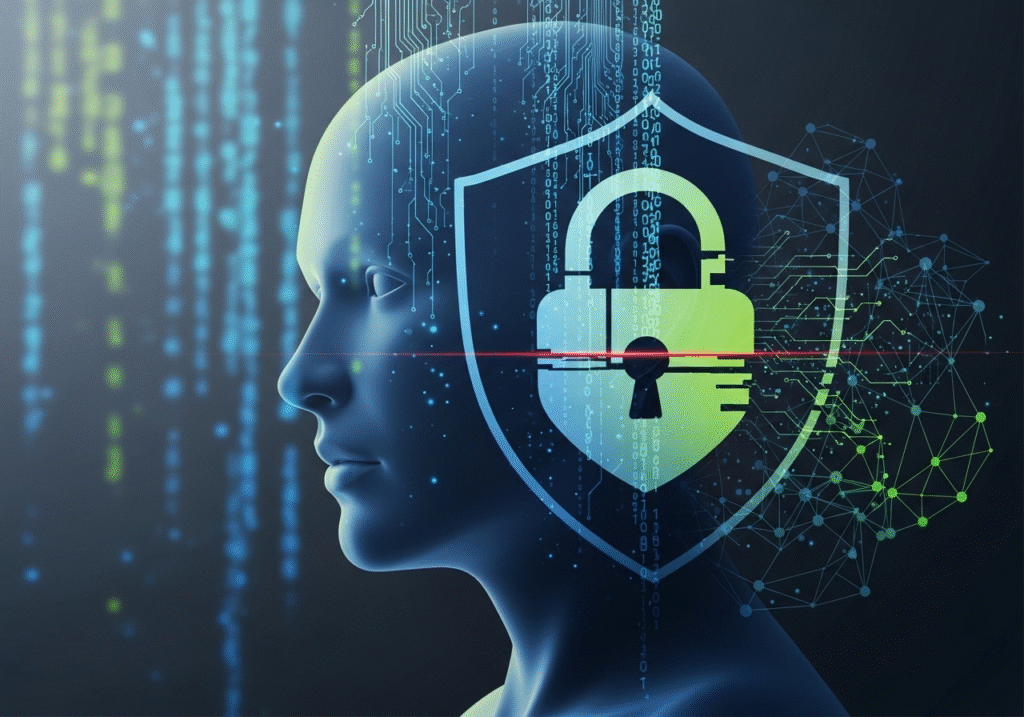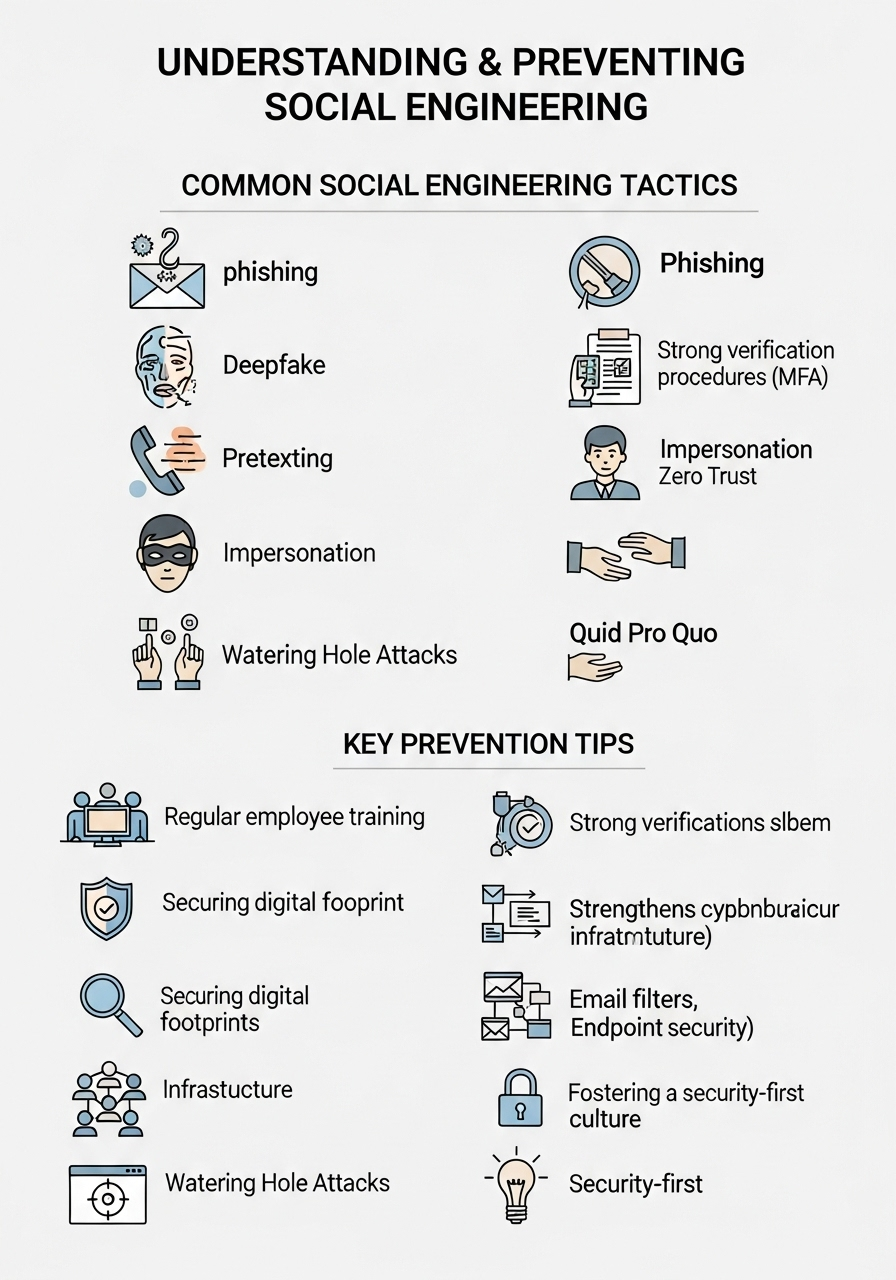
In the ever-evolving landscape of cybersecurity, social engineering remains one of the most insidious and effective threats.
Unlike traditional hacking that exploits technical vulnerabilities,
social engineering preys on human psychology, manipulating individuals into divulging confidential information or performing actions that compromise security.
As we move into 2025, these tactics are becoming increasingly sophisticated, making it crucial for everyone to understand how they work and, more importantly, how to defend against them.
This blog post will delve into the advanced social engineering techniques cybercriminals are employing in 2025 and provide actionable tips to safeguard yourself and your organization from these human-centered attacks.
The Evolving Face of Social Engineering in 2025
Cybercriminals are constantly refining their methods, leveraging new technologies like artificial intelligence to make their schemes more convincing and harder to detect.
Here are some of the key evolving social engineering techniques observed in 2025:

How to Protect Yourself and Your Organization
While the threats are evolving, so too are the defense mechanisms.
Protecting against social engineering requires a multi-layered approach that combines technological solutions with a strong emphasis on human awareness and education.
Here are some essential tips:
Conclusion
In the ongoing battle against cybercrime, vigilance and preparation are your strongest allies.
By understanding the evolving nature of social engineering tactics and implementing robust protective measures, you can significantly reduce your vulnerability to these human-centered attacks.
Stay informed, stay skeptical, and always prioritize security in your digital interactions.
Spear Phishing
Spear phishing, a highly targeted form of phishing, continues to be a prevalent threat.
In 2025, advancements in generative AI have empowered attackers to craft incredibly personalized and convincing spear phishing emails.
These emails often mimic trusted sources, making them exceptionally difficult to distinguish from legitimate communications.
For instance, a cybercriminal might pose as a CEO, emailing a finance officer with urgent instructions to transfer funds, citing a fabricated reason [1].
Deepfake Technology
Deepfake technology, which uses artificial intelligence to create highly convincing audio or video impersonations, is a rapidly emerging threat.
By 2025, deepfake-enabled cyberattacks are on the rise, particularly targeting sectors like healthcare and finance.
Imagine a fraudster using a deepfake voice recording of a CFO to instruct an employee to release confidential data – the realism can be chilling [1].
Pretexting
Pretexting involves attackers fabricating a believable scenario to extract information.
This often includes impersonating trusted authorities, such as IT support or government officials.
In 2025, AI is increasingly being used to create sophisticated pretexts, enhancing the believability of these fabricated scenarios.
An attacker might call an employee, claiming to be from IT, and request login credentials to “resolve a network issue” [1].
Impersonation
Impersonation attacks are becoming more prevalent, with attackers leveraging social media to gather information and craft convincing personas.
They pose as legitimate employees, contractors, or authority figures to gain trust and access within an organization.
For example, an individual might dress as a delivery person and convince reception to grant access to secure areas under the pretense of delivering an urgent package,
allowing them to gather confidential information or plant malicious devices [1].
Quid Pro Quo
In a quid pro quo attack, cybercriminals offer a service in exchange for information.
A growing trend in 2025 involves attackers offering fake tech support or software updates, exploiting this tactic to gain unauthorized access.
An individual might call, claiming to be from tech support, offering to fix a reported issue, and in the process, ask the employee to disable security settings, allowing the attacker to install malicious software [1].
Watering Hole Attacks
Watering hole attacks involve cybercriminals identifying and compromising websites frequently visited by their target audience.
When the victim visits the infected site, malware is installed on their system.
These attacks are becoming more sophisticated, often blending with supply chain attacks to target specific industries, such as maritime, shipping, and logistics.
A compromised website frequented by employees of a specific industry could install spyware on visitors’ computers [1].
Conduct Regular Employee Training
One of the most effective defenses against social engineering is a well-informed workforce.
Regular, scenario-based training can simulate social engineering attacks like phishing and pretexting, teaching employees how to recognize and respond to them.
Awareness campaigns are also crucial to keep employees updated on the latest social engineering trends and tactics [1].
Implement Strong Verification Procedures
Strong verification procedures add critical layers of security.
Multi-Factor Authentication (MFA) should be implemented across all systems to prevent unauthorized access, even if credentials are compromised.
Additionally, adopting Zero Trust policies, which assume that all interactions (internal and external) could pose a risk until verified, significantly enhances security posture [1].
Secure Your Digital Footprint
Cybercriminals often gather information from public sources to craft their attacks.
Minimizing the amount of sensitive information shared publicly, such as on websites or social media, can reduce your exposure.
Regularly auditing your organization’s online presence for exploitable information is also a proactive measure [1].
Strengthen Cybersecurity Infrastructure
Robust cybersecurity infrastructure is fundamental.
Deploying advanced anti-phishing tools can detect and block malicious emails before they reach employees.
Endpoint security solutions are also vital to protect devices from malware introduced through tactics like baiting [1].
Encourage a Security-First Culture
Ultimately, a strong security culture is paramount.
Encourage employees to report suspicious activities without fear of repercussions, fostering an environment of open communication.
Recognizing and rewarding employees who successfully identify and prevent potential threats reinforces vigilant behavior and strengthens the overall security posture of the organization [1].
The Alarming Statistics of Social Engineering
To underscore the severity of this threat, consider that up to 98% of cyberattacks, against businesses and individuals alike, involve some form of social engineering [2].
This statistic alone highlights why understanding and mitigating these human-centric attacks is not just important, but critical for cybersecurity in 2025.
References
[1] USA Cyber. (2025, March 12). *Understanding Advanced Social Engineering in 2025: 6 Evolving Techniques*.
[2] Viking Cloud. (2025, July 15). *192 Cybersecurity Stats and Facts for 2025*.
